Gun Review: Beretta 92 FS Compact L with MTR Custom Leather
Fabbrica d’Armi Pietro Beretta, founded in 1526, is the oldest firearms manufacturer still producing today. Over the last 450 years Beretta has gained a reputation as a high-quality manufacturer of arms; from easily and cheaply produced submachine guns for military use to some of the world’s finest sporting shotguns. Here in the States Beretta is probably best known for their handguns. Most notably their 90-series pistols, a variant of which was adopted as the sidearm of the United States Armed Forces after a controversial-on-the-internet series of handgun trials beginning in the early 80’s . . .
The particular pistol to be scrutinized in this review is the Model 92FS Compact L, a reduced sized version of their flagship 92FS. This pistol’s heritage begins with Beretta’s first foray into the P38-type falling locking block method of operation, the M1951. In 1975 this locking mechanism, along with aspects of the then new Model 84, was used as the basis for a larger high-capacity service pistol design that became the Model 92.
The original Model 92 was a single action pistol with a manual safety and the magazine release button located toward the heel of the grip. This design was changed over the years to meet the requirements of police and military contracts, most notably those of the US M9 and French PAMAS, resulting in the DA/SA slide mounted decocker safety 92FS we know and love (or not) today.
Overview
When first handling the pistol, the best word that came to mind to describe it is “substantial”. Sporting a 4.3″ barrel and reduced length grip the Compact L is certainly smaller than its full-size 92FS counterpart, but rather large by today’s standards when a 4″ barrel passes for a “full-size” pistol, as with the S&W M&P, Steyr M, or FN FNP/FNS. For reference, I compared the Compact L to other modern ~4″ barreled pistols I have at my disposal: the SIG SAUER P225/P6, GLOCK 19, Steyr M9A1, and CZ P01.
Current production Compact Ls are available equipped with an M9A1 style frame with accessory rail.
The Compact L (center) isn’t the most compact of compacts.
Being of steel/aluminum construction, the Compact L is a hefty pistol, weighing in at 32 ounces. It’s the heaviest of the five by several ounces. It also isn’t the slimmest handgun, being noticeably wider than the others with a 1.38″ thick grip. It is long thanks to that extra 0.3″ of barrel but has a rather short grip which I have found to be a more important factor when trying to conceal a handgun.
Magazine capacity is another area where this pistol falls behind its contemporaries. At 13 rounds it holds the fewest of the pistols above, save the single column P225, despite its large grip diameter. The Compact L will accept any 92FS magazine, so increased capacity is available if so desired. Personally, holding one or two rounds less is not an overwhelming concern.
Having larger hands, I find the grip length to be “just right” with the magazine in place; no pinky left dangling off in space.
The magazine release is large and easy to activate, but not so large as to have the shooter accidently press it under recoil. The slide release lever is easily accessed with my strong hand thumb without changing my grip, as can the slide mounted safety lever. Individuals with smaller hands will have to alter their grip to reach the controls, but I have found that disabling the safety as part of the draw stroke to be easy enough regardless of hand size. There is a lot of internet griping about the slide mounted safety/decocker, especially with respect to inadvertently activating it while manipulating the pistol to clear a malfunction or something similar, but I will address that in the shooting section later in the review.
The front and back straps of the grip are checkered, giving the user a solid grip. The checkering is not too aggressive and does not aggravate the hand after prolonged shooting. The factory grips feel smooth despite their appearance. Fans of aggressive texturing would certainly want to swap them out.
The pistol comes equipped with the standard 92FS steel 3-dot sights. The rear sight is dovetailed in place while the front is machined as part of the slide, making replacement a costly endeavor. Fortunately, the sights are rather usable; the large dots make them easy to locate and the sharp flat top allows for good alignment.
Disassembly is achieved by locking the slide to the rear with the magazine removed and the safety disabled, then rotating the disassembly lever down. This allows the slide to be removed by sliding it forward off the frame. The spring/guide rod assembly can then be removed from the slide, followed by the barrel, in a manner similar to any other short-recoil operated pistol. Cleaning the gun is no harder than any other. The nicely finished internal surfaces make wiping up carbon and such an easy task.
Fit and finish on the external and internal surfaces of the pistol are excellent. The “Bruniton” enamel finish had proven durable through hundreds of draws from a MTR Custom Leather holster and several months of carry in less than friendly Florida weather. Wear is present on surfaces that directly contact the holster, as well as on portions of the frame rail where accessories have been attached but have worn no worse than quality finishes on my other firearms that have seen similar use.
One of the benefits of the 92’s design is the “direct feed” arrangement between the barrel and the magazine. Since the barrel does not tilt as part of unlocking from the slide, there is no need for a large feed ramp, which allows the magazine to line the next round up more-or-less in line with the barrel. This allows for extreme reliability with regard to feeding various ammunition types. This particular handgun has fed numerous hollow points, semi-wadcutters, lead round nose, and various other projectile shapes without malfunction. This coupled with the open top slide and beefy extractor ensures this pistol is not likely to see any feeding or extraction issues.
Shooting The Thing
The trigger is very good. The double action pull is moderate in weight and smooth with no discernible stacking, allowing for a consistent sight picture on the first shot without any jittering around when you hit bumps as may be experienced with other DA triggers. The reset is short, audible, and tactile, allowing for a quick follow up SA shot. There is a short take up on the single action, due to the need to lift the firing pin block out of the way, followed by a hard stop and a light crisp break. There is an over travel of a few millimeters, but nothing to be too bothered by. Overall, this pistol has one of the best DA/SA triggers that I have tried.
Shooting the Compact L is enjoyable; the heft of the handgun results in a less snappy recoil impulse, making reacquiring the sights and taking the next shot very easy. The moderate checkering lets you keep a consistent grip; the gun never feels like it is going to jump or shift in your hand. For what its worth, new shooters have typically been more comfortable with this handgun than any of the other 9x19mms I provide. It really is just very easy to shoot well. The slide is also easy to manipulate; shooters with less strength that have difficulty racking the slide of other handguns find this Compact L’s slide easy to work.
The pistol exhibited excellent reliability for 300-400 rounds. No malfunctions of any sort…
Then I Broke It
During one of my few first range sessions with the Compact L, I discovered that the safety/decocker ceased to function. When the lever was moved into the “safe” position, the hammer failed to drop. More unsettling, I found that with the lever in the “safe” position I could still pull the trigger and fire the handgun as long as the hammer was back. This is because the safety, when in the safe position, disconnects the DA mechanism. Assuming that the hammer was dropped his would prevent the gun from being fired. It does not, however, disable the sear so the SA pull still works. So, if by some means the hammer can be cocked with the safety on, as in this case, the gun can still be fired.
The pistol was disassembled, and I determined that the hammer release lever had broken off, which made a whole lot of sense seeing as the hammer was not releasing. Fortunately, after some crawling around I was able to find the missing portion of the hammer release on the floor.
Well, this isn’t good.
Under magnification it appeared to be a rather rapid brittle fracture of the part, possibly due to insufficient heat treatment. I am not familiar as to how this part is manufactured, so what exactly went wrong is hard to determine. What I do know is that it broke, and that it probably wasn’t supposed to.
I contacted Beretta USA to notify them of the issue. They offered to replace the part if I sent them the gun but would not send me the part to do it myself as it was part of the safety mechanism. Being a capable man, I opted to purchase the part and complete the repair myself. This was simple enough to repair, taking maybe 15 minutes and basic tools. It did not prevent the gun from actually firing, so even if this failure occurred at the worst possible time, you would still be left with a functioning pistol (so long as the broken bit didn’t go somewhere it didn’t belong). Still, having a part break that disables the safety while allowing the gun to fire isn’t the coolest thing that can happen.
This goes to show that one should put their firearm through its paces before trusting it as a defensive weapon. Even experienced manufacturers with mature, well-proven designs run into the occasional bad part that can leave your gun less than functional at an inopportune moment.
Let’s Try This Again
After repairing the pistol, a further 400 rounds have been fired through it ranging from 147 gr. premium hollow points to my terrible dirty 125 gr. LRN over Bullseye reloads. The gun feeds, fires, and ejects everything without issue, and no further parts breakage has been experienced.
Now about that slide mounted safety. Drawing from a holster, it is easy to have your thumb disable the safety while you obtain your grip, from which point you rely on keeping your finger off the trigger and the long DA pull to prevent discharge of the pistol until your sights are aligned and you are ready to shoot. Alternatively, if you have large enough hands, you can disable the safety whenever you like after you draw the pistol.
Clearing induced malfunctions using dummy rounds did not result in inadvertent activation of the safety. Using an overhand grip with my thumb under the safety and pointing rearward, I am able to ensure that the safety remains in the “fire” position. I believe concerns I have heard/read as to the slide mounted safety being a detrimental feature are grossly overstated.
As far as accuracy is concerned, during slow fire the pistol shoots as well or better than anything else, rivaling my CZ-75 as one of my more accurate handguns. If you are used to DA/SA guns, first shot on target is no problem with the snag-free DA. If you are used to striker fired or SA guns, the DA pull will take some getting used to and you will see a tendency to pull your first shot if you fail to pull the trigger strait to the rear. Under rapid fire, the weight of the pistol coupled with its predicable and responsive trigger makes quick, accurate strings easily achievable.
Outside the Range
The biggest issue I ran into with carrying his pistol was finding an appropriate holster. At the time I was looking there was no one who made a holster for the railed model with a light attached. I was able to have one made through MTR Custom Leather, LLC. They custom make all the holsters for the Beretta weapons with or without lights, lasers, optics, threaded barrels and more! All handmade and custom to each weapon. Great custom service and turn around. The quality is amazing and made in USA with all USA materials!
Carrying the pistol IWB was about the same as carrying my P01 or GLOCK in terms of concealability; the short grip keeps printing to a minimum. The increased weight, especially compared to polymer guns, was not particularly noticeable with a good belt. OWB under a light jacked or un-tucked shirt, it is like carrying any other handgun.
Specifications:
Caliber: 9x19mm Luger
Action: DA/SA, falling lock, short recoil
Barrel length: 4.3 inches
Overall Length: 7.8 inches
Overall Width: 1.38 inches
Overall height: 4.85 inches to top of slide
Weight: 2 lbs
Sights: 3-dot steel, read drift adjustable
Finish: Bruniton enamel
Capacity: 13 rounds
Price: $ 745 (MSRP) $650 (street)
Ratings (Out of Five Stars):
Style: * * * * *
Few things are classier than a fine Italian handgun (even if they made this son in the US).
Accuracy: * * * * *
The 92FS Compact L shoots as well as the most accurate service pistols I have used. The dampened recoil and excellent trigger make accurate rapid fire achievable.
Ergonomics: * * * *
Who decides how big a “compact” pistol is anyway? This pistol may be as large as some handguns that are marketed as full-size pistols, but it’s smaller than the 92FS, so compact it is. The dimensions that are larger don’t seem to affect its concealability as compared to similar sized pistols, so I would call it compact enough. For those with larger hands the controls will be easy to reach and manipulate. Shooters with smaller hands may find the slide mounted safety hard to reach while maintaining their shooting grip and other controls may require shifting to reach.
Reliability: * * * * *
This pistol is approaching 1000 rounds of ammunition without any failures to feed, extract, or eject. The “direct feed” alignment of the magazine and bore, open top slide, and well-designed extractor ensure reliable function with a wide variety of ammunition types. 
Durability: * * * ½
My experience with the hammer release lever is not typical, and I wholeheartedly believe, based on past experience, that Beretta builds an excellent, durable product. Still, the problem I had must be reflected, and I docked the pistol one and a half stars. I would have likely been harsher if the pistol didn’t still function after the hammer release broke. The finish has proven to be at least as durable as those on other pistols.
Customization: * * *
While not as extensive as what is available for GLOCKs, the 92 series has a number of accessories specifically tailored to it, especially with Wilson Combats recent expansion into pistols of this design. The frame rail allows for the addition of light, lasers, and bayonets (if that’s your sort of thing). Compatible surplus magazines are available by the boatload. Holsters are a bit tough to find, but if you don’t care about having the light attached a number of high-quality manufacturers can accommodate, including the Wilson Combat. Other, wise having one custom made may be what you have to do. The fact that the front sight can’t be changed hurt the Compact L in this category as well.
Overall: * * * *
Despite the hammer release hiccup, this 92FS Compact L is quickly becoming one of my favorite handguns. The 92FS is a proven design that has been in service for decades in the U.S. Armed Forces as well as countless other military and police forces worldwide. One of the big drawbacks is the price. At $650 new from Bud’s Gun Shop, I have a hard time coming up with a reason to spend an extra $100-150 versus the CZ P01, GLOCK 19, or other similarly sized handguns available on the market. Though if you are willing to hand over the extra cash, I believe you will find the 92FS Compact L to be a capable and thoroughly enjoyable pistol.
holsters for Beretta weapons can be found at www.mtrcustomleather.com
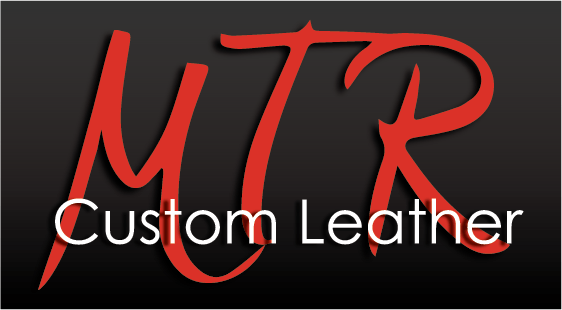
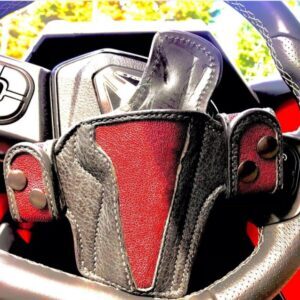
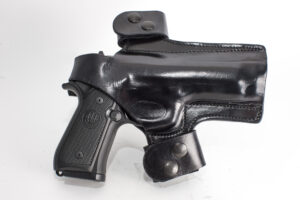
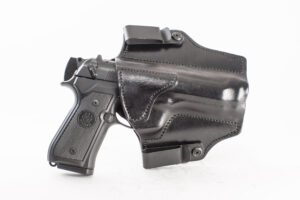
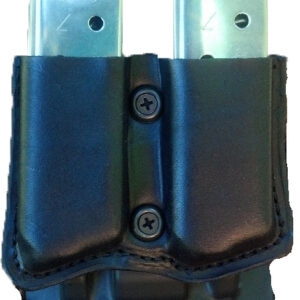
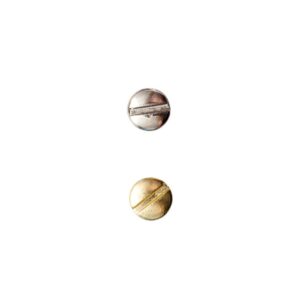
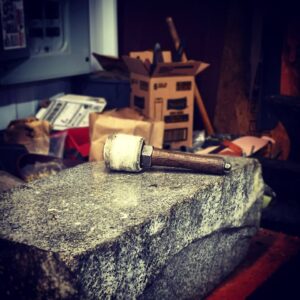
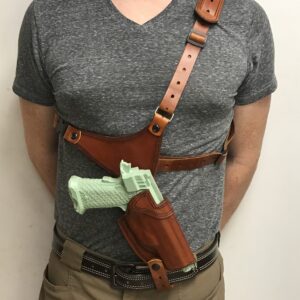
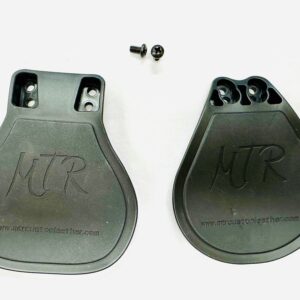
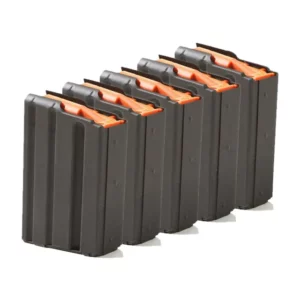
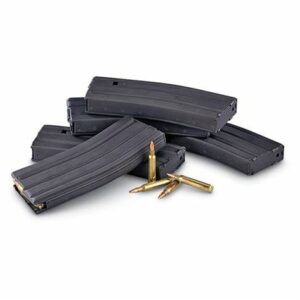
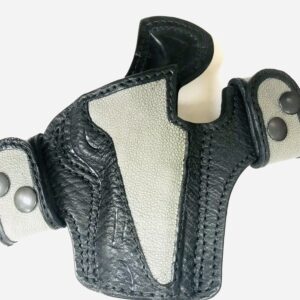
Recent Comments